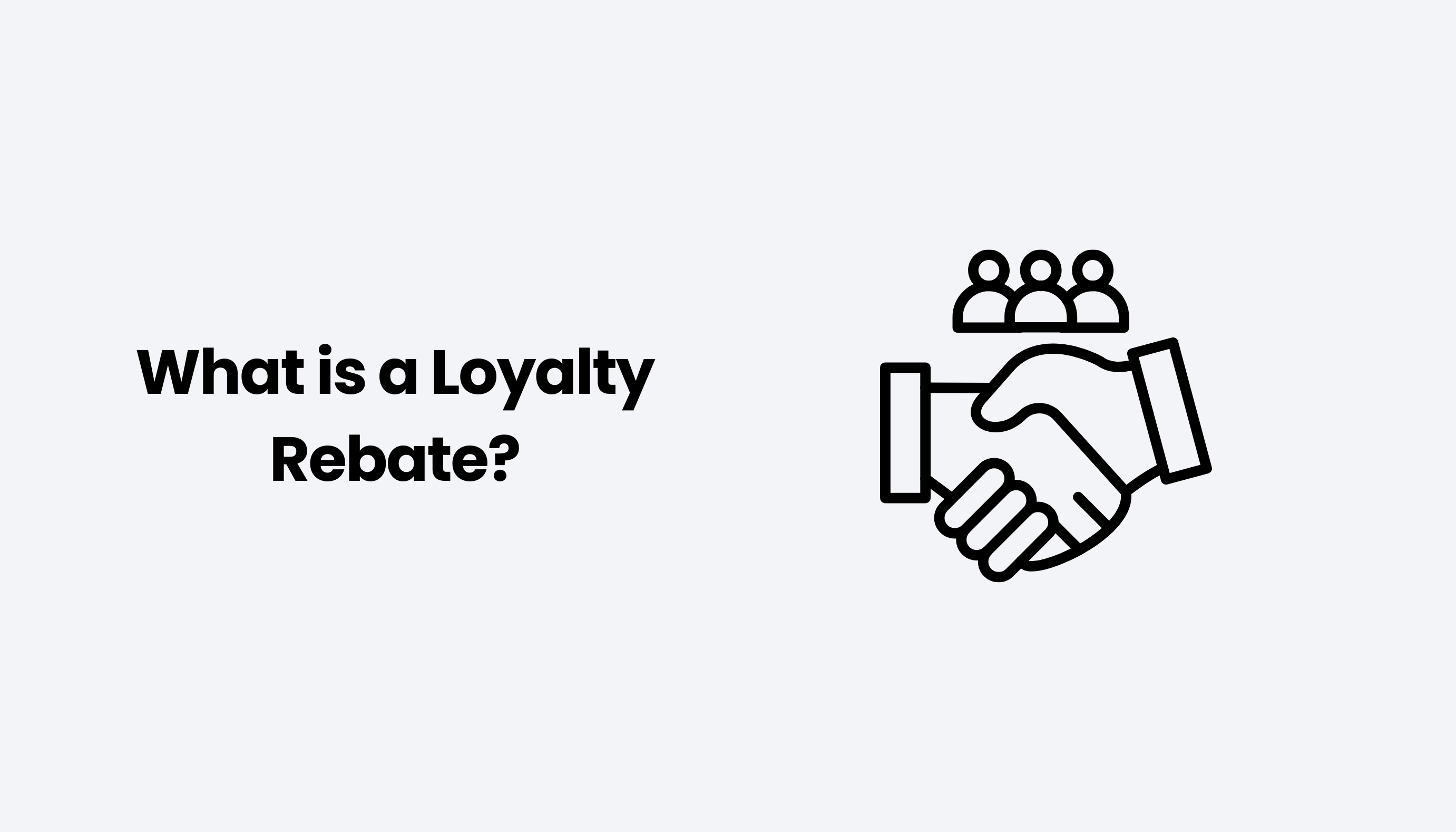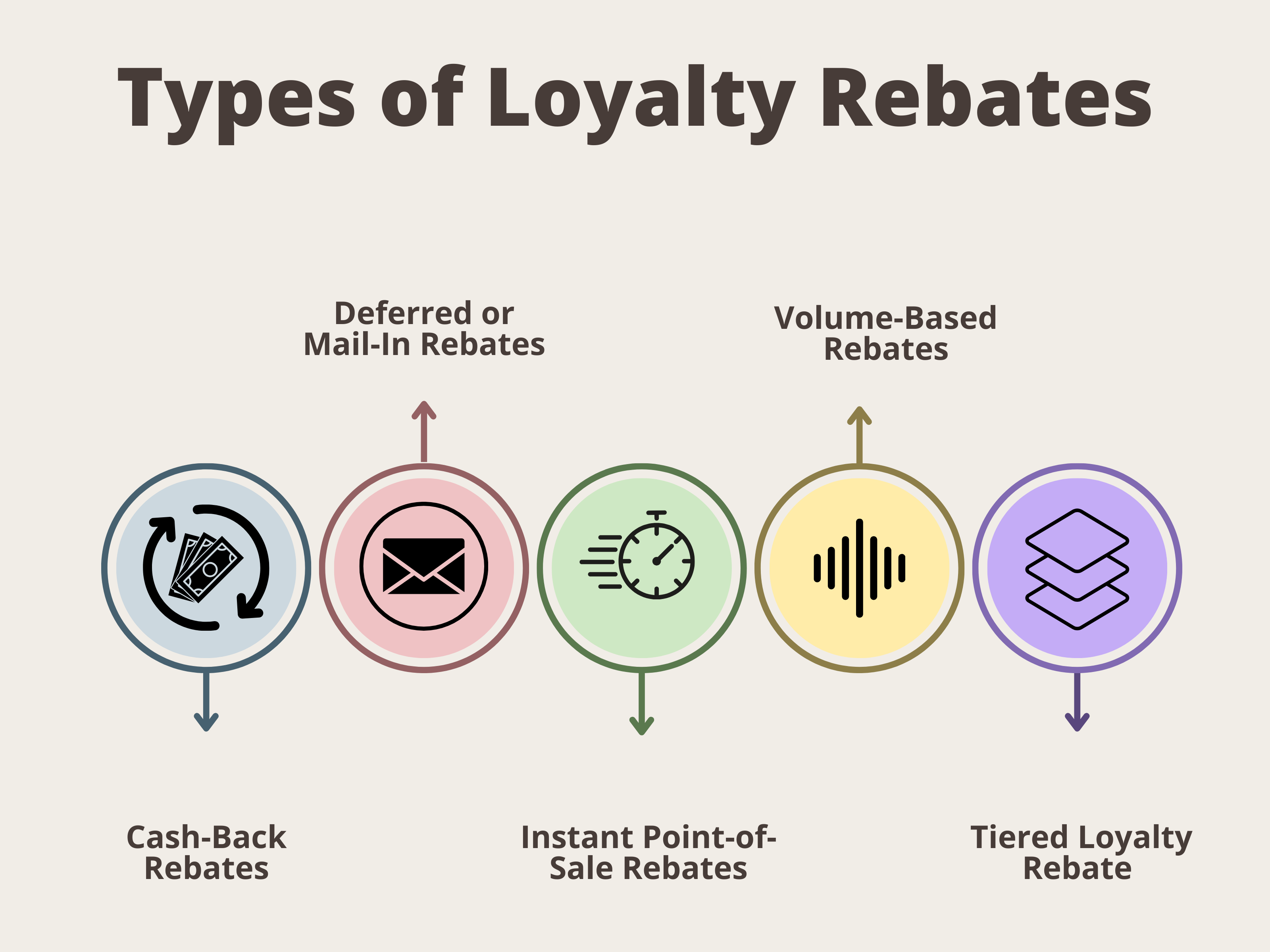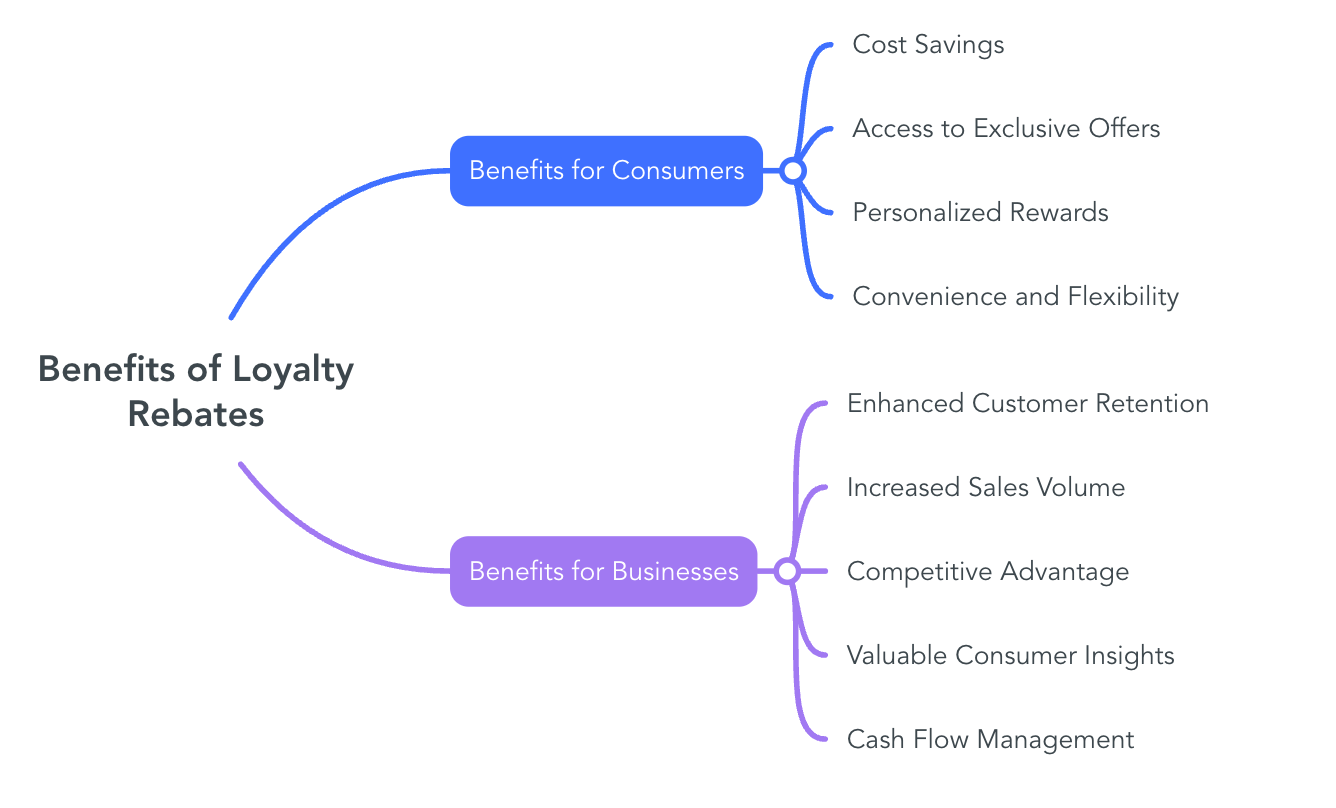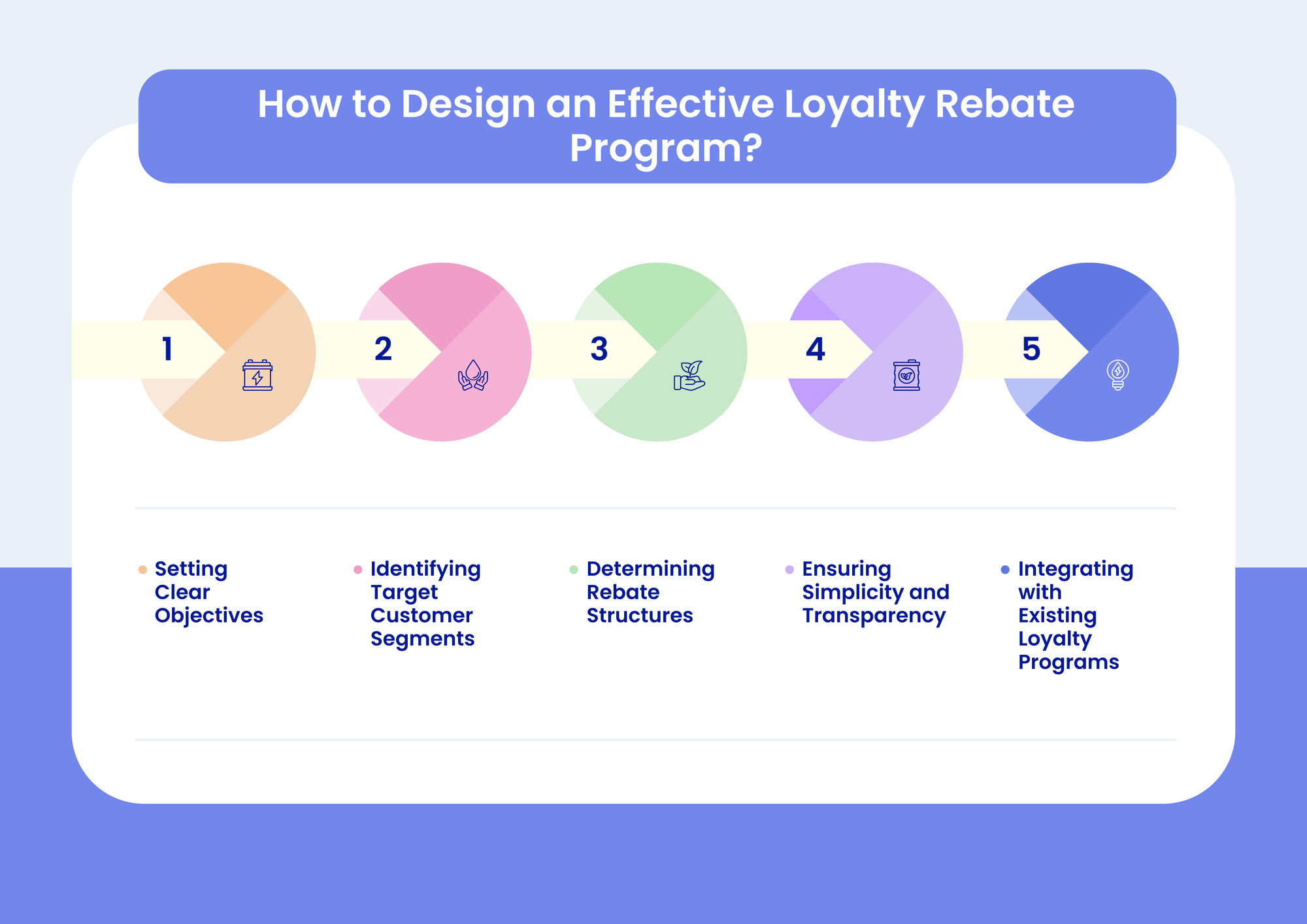What is a Loyalty Rebate?

Businesses continually seek innovative strategies to attract and retain customers. Among these strategies, loyalty rebate programs have emerged as a pivotal tool, offering customers financial incentives to encourage repeat purchases and foster brand allegiance.
These programs not only benefit consumers through cost savings but also provide businesses with valuable insights into consumer behavior, enhancing marketing efforts and driving sales. As we delve deeper into the intricacies of loyalty rebates, we will explore their various types, benefits, challenges, and future trends
Table of Contents:
- What are Loyalty Rebates?
- Types of Loyalty Rebates
- Benefits of Loyalty Rebates
- Challenges of Loyalty Rebates with Solutions
- How to Design an Effective Loyalty Rebate Program?
- Future Trends in Loyalty Rebates
Jump to a section that interests you, or keep reading.
What are Loyalty Rebates?
Loyalty rebates are a marketing strategy designed to encourage customers to continue purchasing from a specific business or brand by offering financial incentives based on their purchasing behavior. These rebates reward repeat purchases or sustained engagement, fostering customer retention and strengthening the relationship between the consumer and the company.
Types of Loyalty Rebates

Loyalty rebates are strategic incentives that businesses offer to encourage repeat purchases and foster customer loyalty. These rebates come in various forms, each tailored to different consumer behaviors and preferences. Here's a detailed exploration of each type:
1. Cash-Back Rebates
Cash-back rebates provide customers with a percentage of their purchase amount returned as cash or credit. For instance, a customer might receive 5% back on a $100 purchase, equating to $5. This rebate can be applied immediately at the point of sale or accumulated over time and redeemed later. The immediate financial benefit of cash-back rebates makes them appealing, as they directly reduce the effective cost of a product or service. Many credit card companies and retailers offer such programs to incentivize spending.
2. Deferred or Mail-In Rebates
Deferred or mail-in rebates require customers to submit proof of purchase to receive a rebate after the transaction. Typically, customers fill out a form and mail it along with a receipt or barcode to the manufacturer or retailer. After processing, the customer receives the rebate as a check or credit. While this method can offer significant savings, the additional effort and waiting period often result in lower redemption rates. However, for diligent customers, mail-in rebates can provide substantial discounts.
3. Instant Point-of-Sale Rebates
Instant point-of-sale rebates offer immediate discounts during the purchase process. The rebate amount is deducted directly from the purchase price at checkout, eliminating the need for additional steps post-purchase. This immediacy enhances customer satisfaction, as they benefit from the discount right away. Retailers often use this approach during promotions to boost sales and clear inventory.
4. Volume-Based Rebates
Volume-based rebates reward customers based on the quantity of products purchased over a specific period. For example, a business might offer a 10% rebate to customers who purchase 100 units within a quarter. This strategy encourages bulk buying and fosters long-term commitment. It's commonly used in B2B transactions, where companies seek to incentivize large orders and strengthen supplier relationships.
5. Tiered Loyalty Rebates
Tiered loyalty rebates provide increasing rebate percentages as customers reach higher spending levels. For instance, spending up to $500 might yield a 5% rebate, while spending between $500 and $1,000 offers a 10% rebate. This structure motivates customers to spend more to attain greater rewards, creating a sense of status and exclusivity. Many loyalty programs, such as airline frequent flyer schemes, utilize tiered systems to encourage continued patronage and higher spending.
Benefits of Loyalty Rebates

Loyalty rebates are strategic incentives that businesses offer to encourage repeat purchases and foster customer loyalty. These programs provide various benefits to both consumers and businesses, influencing purchasing behaviors and enhancing brand-consumer relationships.
Benefits for Consumers
-
Cost Savings: Loyalty rebates offer direct financial benefits, allowing consumers to save money on future purchases. For example, cash-back rebates return a percentage of the purchase amount, effectively reducing the overall cost.
-
Access to Exclusive Offers: Many loyalty programs provide members with exclusive discounts, early access to sales, or special promotions. This exclusivity enhances the shopping experience and adds value for loyal customers.
-
Personalized Rewards: Businesses often tailor loyalty rebates based on individual purchasing habits, offering rewards that align with the consumer's preferences. This personalization enhances satisfaction and encourages continued engagement.
-
Convenience and Flexibility: Some loyalty programs offer instant point-of-sale rebates, providing immediate discounts during the purchase process. This convenience eliminates the need for additional steps post-purchase, making it easier for consumers to enjoy the benefits.
Benefits for Businesses
-
Enhanced Customer Retention: Loyalty rebates incentivize repeat purchases, fostering long-term relationships with customers. This retention is crucial for sustained business growth, as retaining existing customers is often more cost-effective than acquiring new ones.
-
Increased Sales Volume: By offering incentives such as volume-based rebates, businesses encourage customers to buy more products or services. This strategy can lead to higher sales volumes and increased revenue.
-
Competitive Advantage: Effective loyalty rebate programs can differentiate a business from its competitors. By providing added value through rebates, companies can attract price-sensitive consumers and build a loyal customer base.
-
Valuable Consumer Insights: Loyalty programs often collect data on customer purchasing behaviors. This information allows businesses to analyze trends, personalize marketing efforts, and improve product offerings, leading to more informed business decisions.
-
Cash Flow Management: Deferred or mail-in rebates can help businesses manage cash flow effectively. Since not all customers redeem these rebates, companies can benefit from the delayed financial outlay, improving short-term cash reserves.
Challenges of Loyalty Rebates with Solutions
Loyalty rebates are strategic tools businesses use to encourage repeat purchases and foster customer loyalty. While they offer numerous benefits, implementing these programs presents several challenges that can impact their effectiveness. Understanding these challenges and exploring potential solutions is crucial for businesses aiming to optimize their loyalty rebate initiatives.
1. Low Redemption Rates
Challenge: Many customers fail to redeem rebates due to complex submission processes, strict deadlines, or lack of awareness. This results in reduced program effectiveness and customer dissatisfaction.
Solution: Simplify the rebate redemption process by offering online submissions and clear instructions. For instance, retailers like Staples and Sears have introduced online rebate submissions to enhance accuracy and reduce the effort required from customers. 0
2. Perceived Lack of Value
Challenge: Some loyalty programs do not offer significant value to customers, leading to disengagement. A 2015 study found that most supermarket loyalty cards in the United States do not provide real value to their customers. citeturn0search19
Solution: Design loyalty rebates that offer tangible benefits aligned with customer preferences. Personalized rewards and meaningful discounts can enhance perceived value and encourage participation.
3. Data Privacy Concerns
Challenge: Collecting customer data for loyalty programs raises privacy issues. Consumers may be uncomfortable with how their information is used, leading to mistrust.
Solution: Implement transparent data policies, clearly communicating how customer information will be used and protected. Ensuring compliance with data protection regulations can build trust and alleviate privacy concerns.
4. Program Complexity
Challenge: Complex rebate structures can confuse customers, leading to low engagement. Programs with intricate rules or multiple tiers may deter participation.
Solution: Simplify program structures and communicate terms clearly. Providing straightforward guidelines and accessible customer support can enhance understanding and participation.
5. Financial Implications
Challenge: Offering rebates can strain a company's finances if not managed carefully.
Solution: Analyze the cost-benefit ratio of rebate programs to ensure they are financially viable. Implementing deferred or mail-in rebates can help manage cash flow effectively, as not all customers redeem these rebates, reducing immediate financial outlay.
6. Legal and Ethical Issues
Challenge: Loyalty rebate programs can face legal challenges if perceived as anti-competitive. For example, Syngenta and Corteva faced lawsuits alleging their rebate programs suppressed competition and kept prices high. citeturn0news31
Solution: Ensure that rebate programs comply with antitrust laws and promote fair competition. Regular legal reviews and ethical assessments can prevent potential legal disputes.
7. Customer Frustration with Rebate Cards
Challenge: Rebate cards can be inconvenient, with issues like unknown remaining balances and expiration dates leading to unredeemed funds.
Solution: Provide clear information about rebate card balances and expiration dates. Allowing split-tender transactions can enable customers to use the full value of their rebate cards, enhancing satisfaction.
How to Design an Effective Loyalty Rebate Program?

Designing an effective loyalty rebate program requires careful planning and strategic alignment with business objectives. Key components include:
1. Setting Clear Objectives
Begin by defining specific goals for the loyalty rebate program, such as increasing repeat purchases, boosting average order value, or enhancing customer retention. Clear objectives guide the program's structure and metrics for success.
2. Identifying Target Customer Segments
Analyze customer data to identify segments that would benefit most from the program. Tailoring rebates to specific groups, like frequent shoppers or high-value customers, ensures relevance and effectiveness.
3. Determining Rebate Structures
Choose rebate types that align with both customer preferences and business goals. Options include:
-
Cash-Back Rebates: Offering a percentage of the purchase amount back to the customer.
-
Deferred Rebates: Providing rebates after customers submit proof of purchase.
-
Instant Point-of-Sale Rebates: Applying discounts immediately during the purchase.
-
Volume-Based Rebates: Rewarding customers based on the quantity purchased over time.
-
Tiered Loyalty Rebates: Increasing rebate percentages as customers reach higher spending levels.
Define clear thresholds and conditions for each rebate type to ensure transparency.
4. Ensuring Simplicity and Transparency
Design the program with straightforward terms and conditions to facilitate customer understanding and participation. Avoid complex rules that could deter engagement.
5. Integrating with Existing Loyalty Programs
If other loyalty initiatives exist, integrate the rebate program to provide a seamless customer experience. This integration can enhance the overall value proposition and simplify management.
Future Trends in Loyalty Rebates
1. Personalization: Tailoring Rebates to Individual Customer Behaviors
Advancements in artificial intelligence (AI) and data analytics enable businesses to analyze customer behavior patterns, purchase histories, and preferences. This analysis allows for the creation of highly personalized rebate offers that resonate with individual consumers, enhancing engagement and loyalty. For example, AI-driven platforms can recommend products and provide tailored rewards based on a customer's unique shopping habits, leading to a more personalized experience.
2. Digital Integration: Incorporating Rebates into Mobile Apps and Digital Wallets
As consumers increasingly rely on mobile devices for shopping, integrating loyalty rebates into mobile apps and digital wallets has become essential. This integration offers a seamless experience, allowing customers to access and redeem rebates effortlessly. Mobile-first loyalty programs and omnichannel rewards ensure consistency across various touchpoints, whether shopping online, in-store, or via mobile apps.
3. Real-Time Processing: Immediate Application of Rebates at Purchase
Consumers expect instant gratification, leading to the rise of real-time rebate processing. This trend enables immediate application of rebates during the purchase, enhancing the customer experience by eliminating delays associated with traditional rebate methods. Real-time engagement and seamless integration across digital and physical touchpoints are becoming standard expectations.
4. Sustainability Initiatives: Offering Rebates for Eco-Friendly Purchases
With growing environmental awareness, consumers are gravitating toward brands that demonstrate a commitment to sustainability. Loyalty programs are adapting by offering rebates and rewards for eco-friendly purchases or sustainable behaviors. For instance, programs may incentivize customers to buy products with minimal packaging or participate in recycling initiatives, aligning brand values with consumer preferences.
Conclusion
Loyalty rebate programs have proven to be instrumental in cultivating enduring relationships between businesses and consumers. By offering tailored financial incentives, companies can effectively encourage repeat patronage, increase sales, and gain a competitive edge in the market. However, the successful implementation of such programs requires careful consideration of challenges, including redemption complexities and data privacy concerns. Looking ahead, the integration of personalization, digital platforms, real-time processing, and sustainability initiatives is set to redefine the future of loyalty rebates. Businesses that adeptly navigate these trends and align their rebate strategies with evolving consumer expectations will be well-positioned to foster lasting customer loyalty and drive sustained growth.
